Rice knitting is a relief double sided pattern, formed by alternating front and back loops. The knitting pattern “Rice” with knitting needles is voluminous and soft, the scheme is simple and clear. In the classic version, the front side of the product looks the same as the back side.
What is rice knitting, what does it look like
The knitting got its name because bulges are formed on the finished fabric. Depending on the chosen knitting option, the bulges are either oblong and small, or quite large and voluminous. The finished product, knitted with rice knitting, comes out thick and warm. Most often, this knitting is used for winter items.
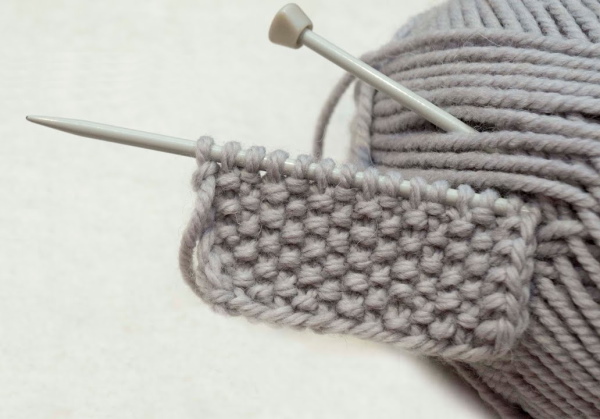
Even a beginner knitter can master the classic rice knitting. It is easy to work with, does not require special skills, special yarn and knitting needles, and is perfectly combined with other knitting options.
What is knitted with the pattern Fig. Scheme and differences from the "pearl pattern"
The “Rice” knitting pattern has a number of advantages:
- the knitting pattern is simple;
- the finished canvas has an attractive appearance;
- the product is double-sided;
- high knitting density.
Due to the ease of work, high density and delicacy of the fabric, the rice pattern is often used to knit children's items, blouses, hats for newborn babies and older children.
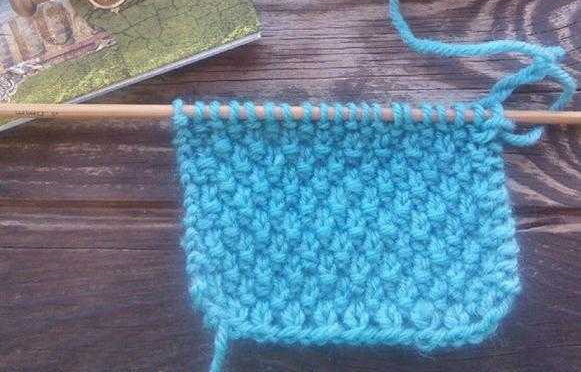
Elastic fabric is used as a base for complex patterns, it is used to fill the voids of knitted geometric figures. “Rice” knitting is used to make patch pockets, strips, trim, knit hats, scarves, snoods, sweaters, blankets, slippers, cardigans.
Tangle, columns, rice, moss, pearl pattern - these knitting methods are often confused. All of the listed types of knitting are formed by a simple combination of front and back loops, but there is one difference. It is clearly visible in the knitting patterns presented below.
The pearl pattern involves shifting the pattern rapport by one stitch in each row.
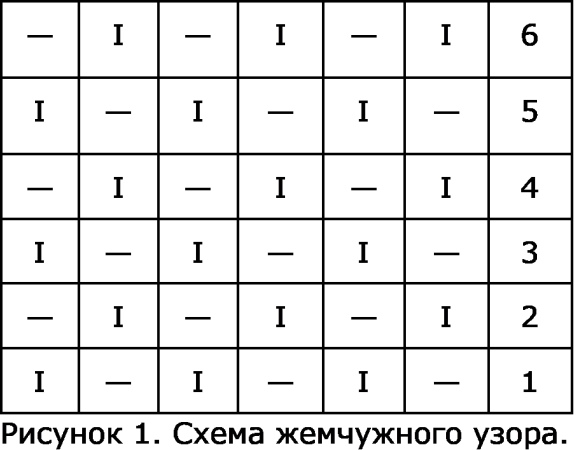
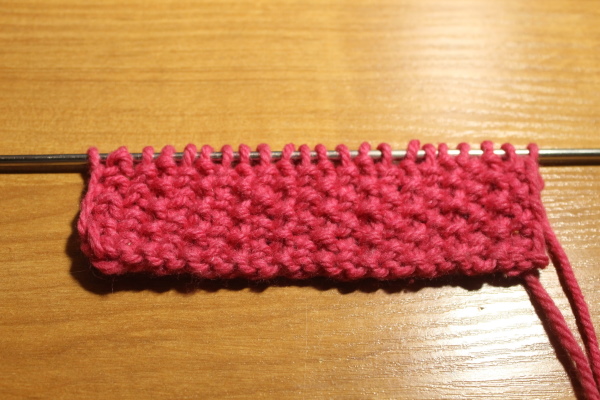
The “rice” knitting pattern, the diagram of which is presented below, implies a shift in the rapport through the row. All purl (even) rows are worked according to the visible pattern of the fabric.

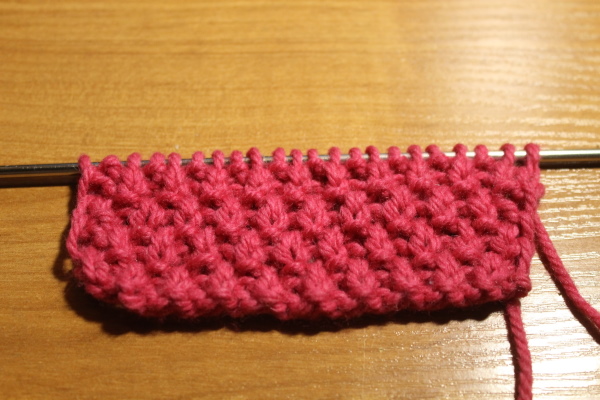
What yarn is suitable?
When choosing a motif for a future product, it is necessary to select the correct thread diameter. “Rice” knitting is most often done with medium and large diameter yarn. This allows you to get a pattern with a relief outline, resembling raised grains of rice.
The parameters of the thread are determined by two indicators: the weight of the skein and the length of the thread in the skein. Yarn with a thick thread is designated by indicators of 120 m/100 g, for a thin thread the indicators are 300 m/100 g. Yarn with average indicators is suitable for knitting “rice”.
For example, 200-250 m/100 g. When knitting a snood, scarf, or men's sweater, you can choose a thicker thread to get a clear pattern with raised bumps.
In any case, before you start working, it is recommended to knit a small test sample from the selected yarn. This will allow you to evaluate the pattern and calculate the number of loops to be cast on. Each skein indicates the recommended size of knitting needles or hook, as well as the expected knitting density.
How to knit correctly
Any knitting, including rice knitting, begins with a set of loops. Their calculation is carried out using a pre-knitted test sample.
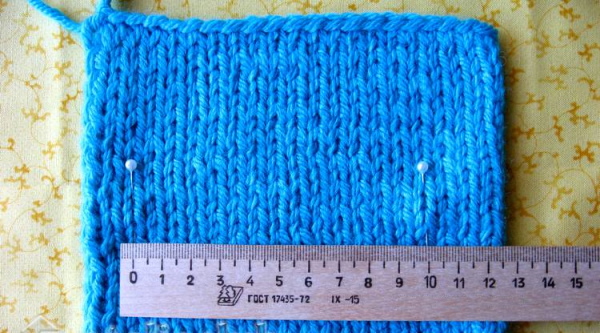
The workpiece is applied to the pattern or an existing similar product as many times as necessary, from edge to edge. This determines the required number of loops. In this case, edge loops are not taken into account.
The “rice” pattern is knitted using the classic knitting pattern by alternating front and back loops. Work begins with slipping the edge loop onto the right needle when knitting with two needles. Further knitting occurs according to the selected pattern.
The last stitch is always knitted purlwise, unless otherwise stated in the description. When knitting the product on circular needles, edge stitches are not picked up.
Knitting options
Knitting "rice" on knitting needles is basic. Even a beginner knitter can master it. But this pattern has many more complex options that allow you to create beautiful and comfortable things.
Standard pattern
Classic or standard rice knitting involves alternating front and back loops with a shift in the pattern by one loop every two rows. The pattern of the “rice” knitting pattern is clearly visible in photo 2. The fabric is elastic, dense, the product is warm and cozy.
Volumetric "Rice"
A product knitted with the “Volumetric Rice” pattern turns out to be more embossed and lush. This knitting is perfect for making things for adults: sweaters, jumpers. To the usual alternation of front and back loops, yarn overs are added to the working (right) knitting needle.
The “rice” pattern with knitting needles, a diagram of volumetric knitting, is presented below. In the working row, the first front loop is removed without knitting onto the right knitting needle with a yarn over, the next one is knitted simply as a front loop.

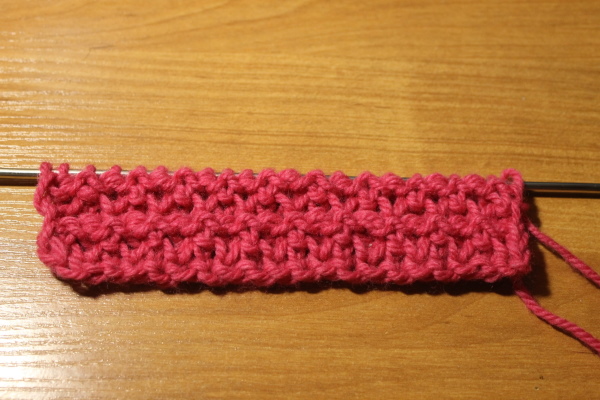
In the second row, the first loop is removed with two yarns, then the front loop. In the third row - with three yarns and a front loop. The fourth row is completely knitted with front loops. From the fifth row, the pattern is repeated, but with an offset of one loop.
The eighth row is knitted with face loops. From the ninth row the pattern is repeated.
When choosing this pattern, you need to carefully count the rows and yarn overs. This will allow you to create a beautiful, effective product.
Double rice
In the “Double Rice” pattern, the alternation of purl and knit stitches is preserved.

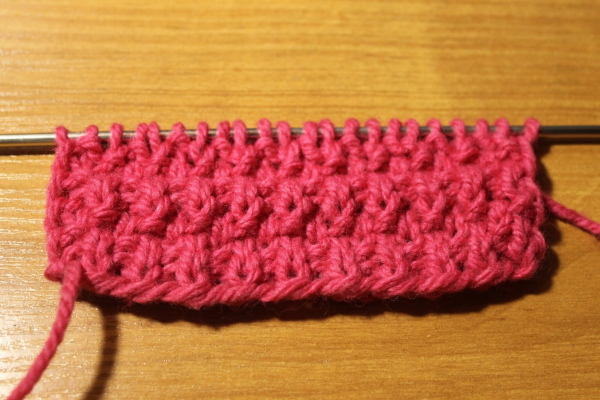
The difference from the classic version is that the third row is knitted only with purl loops, in the fourth the rapport is shifted by one loop. From the fifth row the pattern is repeated. When choosing the “double rice” pattern, you need to cast on an even number of loops + two edge loops.
Half rice
“Half rice” is another variation of the classic rice pattern. This type of knitting involves a set of loops that are a multiple of three, plus two edge loops. Odd rows are knitted according to the pattern, even rows are knitted with face loops.
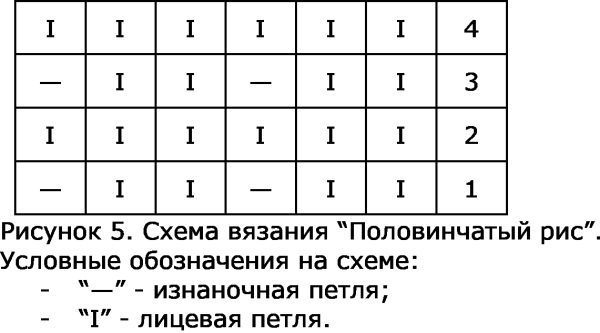

Broken rice
The knitting pattern “Broken rice” is in many ways similar to the pattern “Half rice”. In this knitting, odd rows are knitted with face loops, in even rows, the alternation of loops occurs according to the pattern.
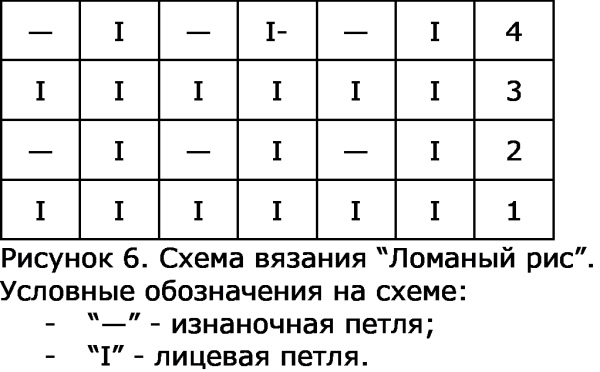
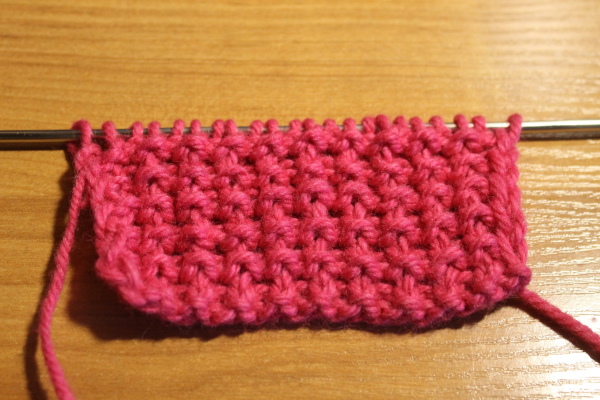
The number of loops cast on is odd. The fabric is one-sided, with different patterns on the front and back sides.
Rice 3D
The most voluminous, effective and textured pattern is found in a product knitted using the “Figure 3D” pattern. This knitting is also called shadow or illusion knitting.
Despite the apparent complexity and unusualness of the pattern, it is also made by combining front and back loops. The 3D effect appears when looking at the product from different angles. This can be achieved by combining several patterns: front and back satin stitch, rice pattern.
The 3D effect looks good on large items, men's sweaters, blankets, and capes.
Two-color rice pattern
A product knitted with a rice pattern using two multi-colored threads looks very impressive. This pattern is suitable for children's blouses, hats or adult festive clothes. The pattern will be appreciated by lovers of a bright and spectacular style.
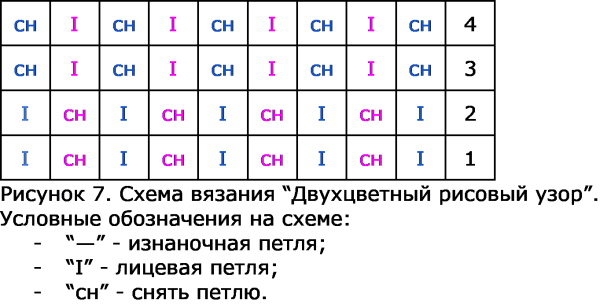
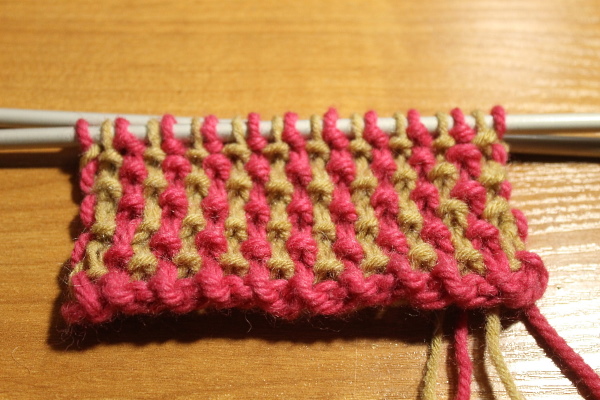
Description of the mating:
- An odd number of loops are cast on with thread A. Then, switch to thread B. Knit one loop with the front loop, remove loop A, leaving thread B behind the fabric. Finish with a front loop, close the edge loop.
- The second row is knitted with thread B: knit, remove thread A, thread B in front of the fabric, finish with a knit. Move to thread A: knit two knits, remove thread B, leave thread A behind the fabric. Continue knitting, alternating threads A and B in rows.
Weaving into other patterns
The simplicity of knitting the rice pattern allows it to be harmoniously combined with other patterns. The voluminous, protruding bumps of the “rice grains” can themselves become a decoration of the smooth fabric or be woven into other, larger patterns as details.
Rice stitches on the surface
The decoration of the fabric knitted with the front surface will be elements of rice knitting. These can be columns, diamonds or other figures.

Volumetric elements can be placed as decoration on the front of the product or the entire item can be knitted with the chosen pattern.
Filling geometric shapes
Large knitted geometric elements look impressive when filled with smaller details. A simple rice pattern is perfect for this. Framed by braids, crossed stripes and other large elements, small and convex rice looks impressive and appropriate.
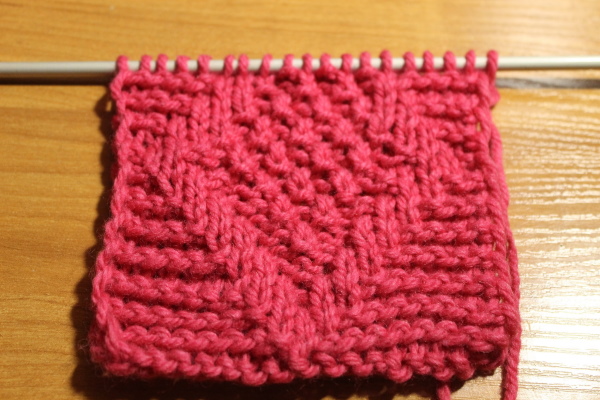
Above is a knitting sample of “Filling geometric shapes with rice knitting”.
Practical application of the pattern
The rice pattern, which is a basic element of knitting, is surprisingly simple to perform and practical to use. Using yarn of different thickness and texture, you can knit a thin baby jacket, a men's sweater, a spectacular women's blouse, a winter hat, and a warm blanket with a rice pattern.
Knitting pattern for a sweater
The simplicity of the rice pattern allows even inexperienced craftswomen to knit large items quickly and without annoying mistakes. If you lack experience, it is better to start with the classic knitting option.
Before you start working, you need to read the recommendations for knitting density and the choice of knitting needles indicated on the skein of yarn. This information also allows you to roughly determine the required number of skeins.
Having decided on the style of the product and the knitting pattern, it is necessary to knit a trial sample. It will allow you to more accurately calculate the required number of loops. The sample is not unraveled until the end of the work.

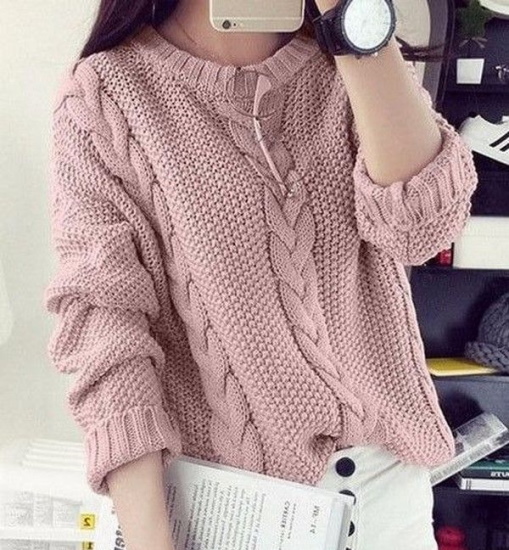

Beginners find it easier to knit a sweater with a raglan sleeve. With this type of knitting, the number of loops on the back, front and sleeves is gradually reduced, and then the parts are sewn together. The collar area is supplemented with an elastic band or crocheted.
More experienced craftswomen, using a little imagination, create amazingly beautiful things by simply alternating front and back loops.
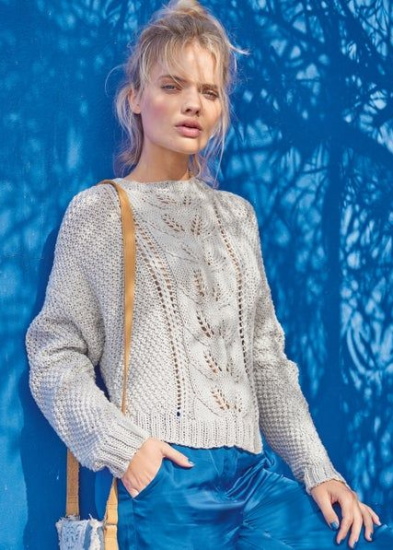
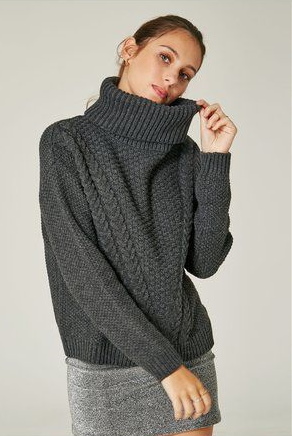

The relatively large parts of the sweater allow for a variety of knitting techniques: filling the inside of geometric patterns, 3D shadow effect or volumetric figures on smooth surface.
The combination of patterns, decorative elements, volume and airiness of the fabric will make a rice knit sweater an impressive detail of both men's and women's wardrobes.
Rice knitting is dense and thick, so when sewing together parts knitted from bulky yarn, rough seams may result. To avoid this, it is necessary to knit the two outer loops of each part with the front surface. In this case, the seams of the product will be elastic and barely noticeable.
Slippers
The density of rice knitting allows you to create not only outerwear, but also warm and light slippers. They can be worn at home or used as socks during a winter walk.
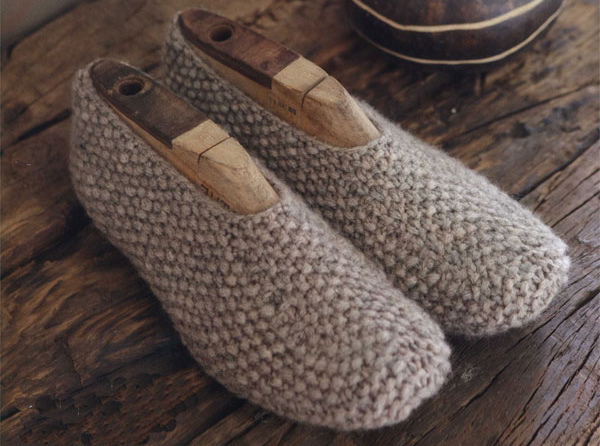
The slippers are knitted quickly and do not require any special knitting skills. You only need to carefully count the loops and rows.
Below is the calculation of loops for shoe size 36-37. We begin knitting by casting on 59 loops.
Next we knit according to the pattern:
- Row 1 (wrong side): garter stitch to the end, mark the center;
- row 2 (front side): front, yarn over, front to the center loop, yarn over, front to the last loop, yarn over, knit the last loop;
- row 3: garter stitch;
- rows 4,6,8,10 are knitted with yarn overs, like row 2;
- rows 5,7,9,11 knit with garter stitch;
- there should be 79 loops;
- knit 5 rows with rice stitch, alternating front and back loops with an offset of 1 loop in each subsequent row;
- we begin to decrease the loops: knit according to the pattern, knit together 3 purl before and after the central loop, then knit again according to the pattern;
- repeat the decrease 6 times in each even row;
- knit odd rows with garter stitch;
- after 29 rows there should be 51 loops left;
- close all loops according to the pattern;
- we sew the slippers along the sole with a working thread, using a hook or a thick needle.
Plaid
A blanket, a cape, a cover for a sofa or an armchair add coziness to the room. It is extremely difficult to knit a blanket entirely on two knitting needles, but you can knit a product in a patchwork style.
Rice knitting is perfect for creating such things. The edges of the parts do not roll into a tube when knitting, so it is easy to connect them into a single product later. A blanket made from multi-colored squares looks bright and festive.
Snood
A snood is a comfortable and warm wardrobe item, a fashionable accessory. The dense, voluminous and elastic rice knit fabric holds its shape well, the edges of the product do not curl. You can knit a snood on two knitting needles or on circular ones.
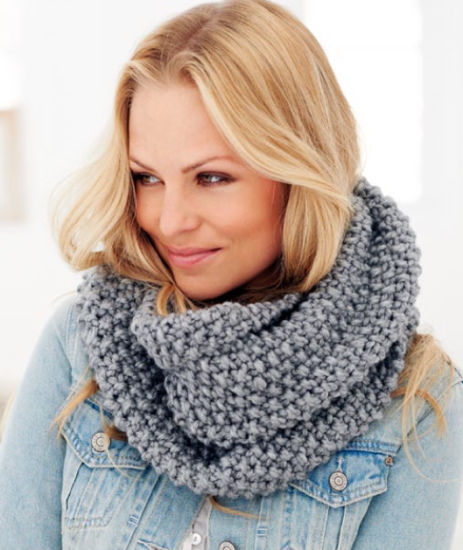
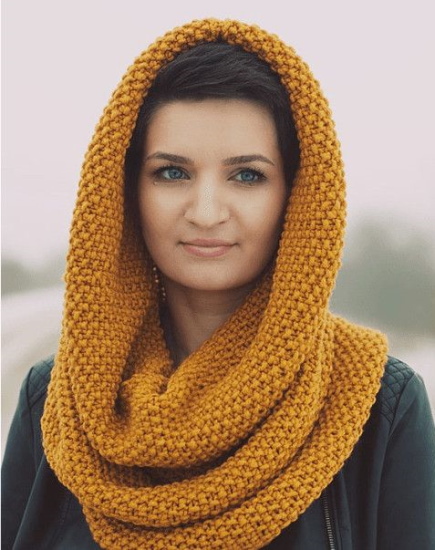
The sample will help to correctly calculate the required number of loops. When using circular knitting needles, edge loops are not collected. When knitting the product on two knitting needles, the edges of the snood are connected with a crochet hook or a special needle with the yarn used. The beginning of the work is marked with a contrasting thread.
Tips for Beginners
The “Rice” pattern with knitting needles, the pattern is classic or with yarns chosen by the craftswoman, most often it is symmetrical and, in order for the resulting product to please and give warmth for many years, it is necessary to follow some rules/
Rules:
- to maintain the symmetry of the pattern, the middle of the piece is marked with a contrasting thread;
- For rice knitting, yarn with short pile or smooth is used;
- for larger items, yarn with a larger thread diameter is selected;
- it is necessary to monitor the tension of the working thread so that the loops are the same size;
- the decrease of loops is done according to the pattern, unless otherwise indicated in the description of the work;
- Closing the loops at the end of the work is done according to the pattern: front loops are closed with a front loop, and back loops are closed with a back loop.
A little attention and patience will allow you to create a unique and beautiful knitted product with your own hands by combining front and back loops.
Video on the topic: rice pattern with knitting needles
How to knit a rice pattern with knitting needles:
